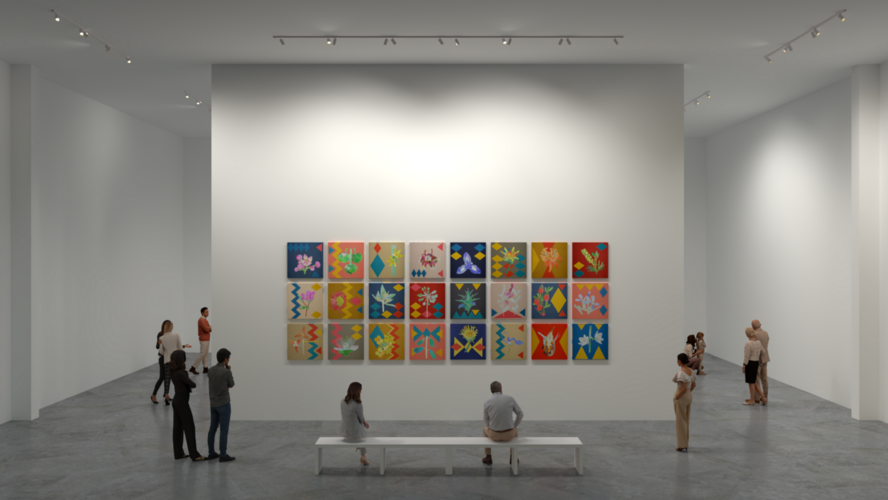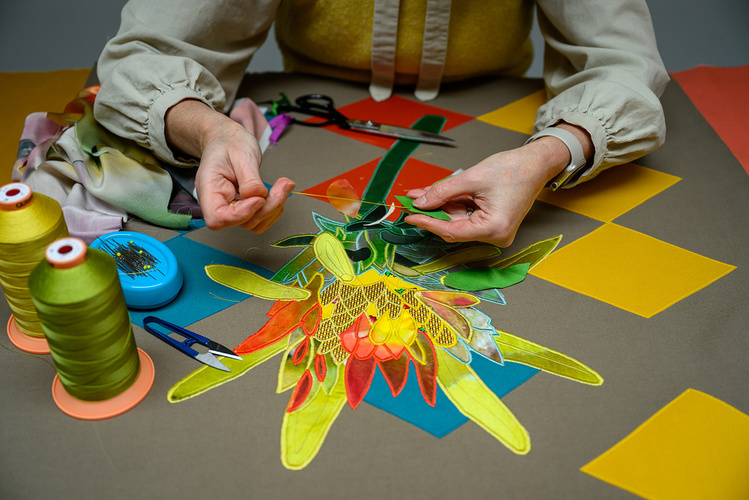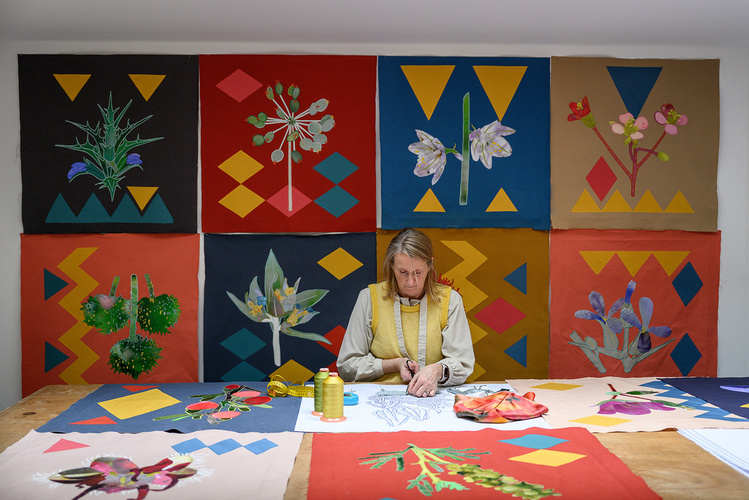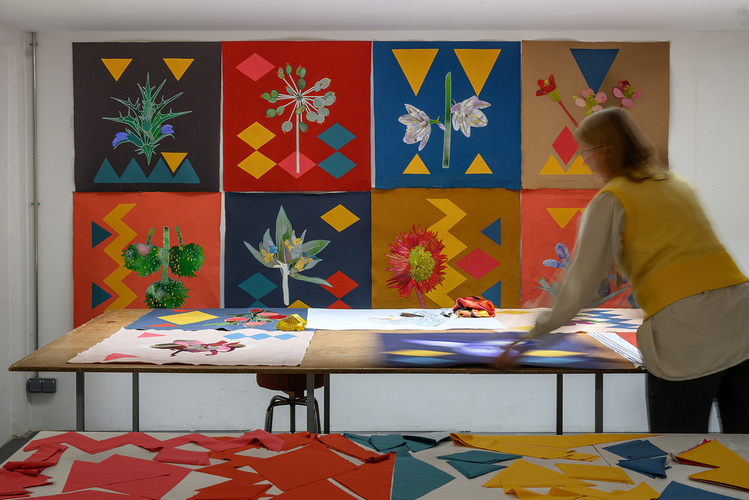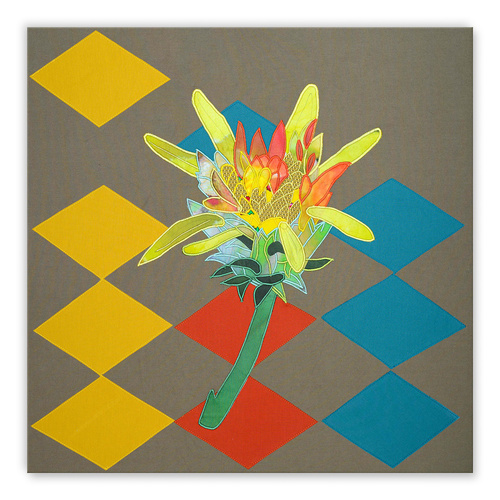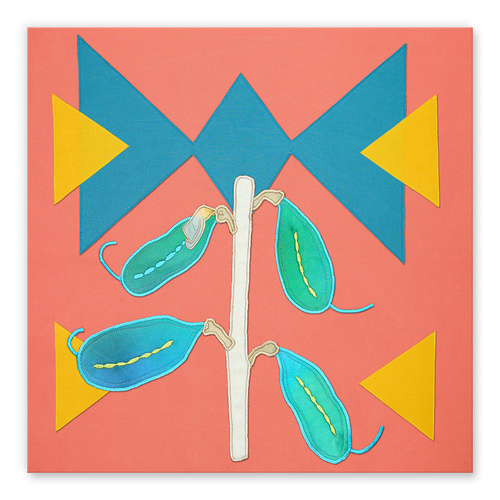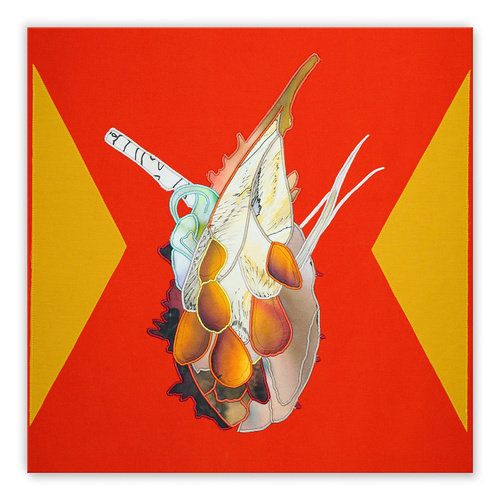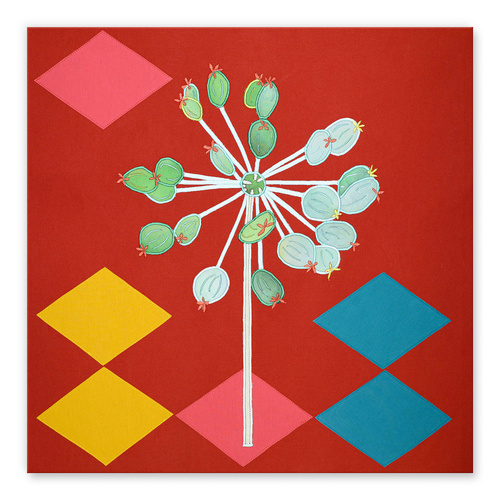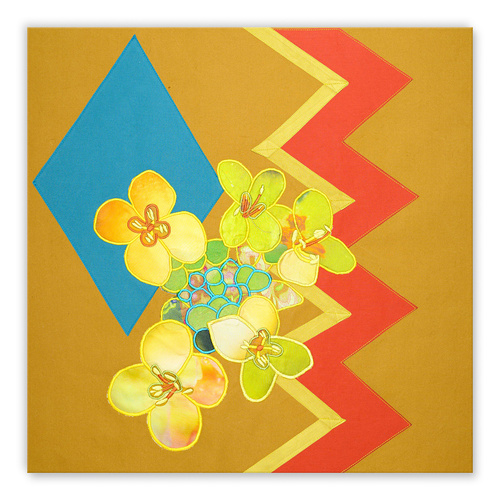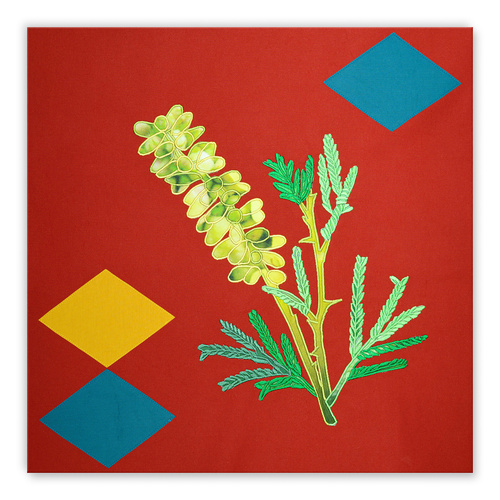Wadi Hanifah Embroidery Landscape
Date:
2024
Matériaux:
Cotton canvas, digitally printed silk satin, embroidery
Dimensions:
70 x 70 x 4 cm each
Exhibition history:
2024 Diriyah Contemporary Art Biennale, Saudi Arabia
Courtesy:
Lucy + Jorge Orta. Photography Michaël Huard
The figurative appliqué motifs of the ‘Wadi Hanifah Embroidery Landscapes’ depicts plant species endemic to the Wadi Hanifah, a desert valley west of the city of Riyadh in Saudi Arabia. Undertaking research for the 2024 Diriyah Contemporary Art Biennale, Lucy collaborated with botanists from the National Centre for Vegetation Cover Development and Combatting Desertification (NVCV) to learn more about the unique properties of vegetation that survive in extreme temperature and drought conditions. Lucy translated the research into meticulous line drawings of Wadi Hanifah desert plants, shrubs and trees. These were enlarged into pattern templates to cut digitally printed silk satin forms, which were embroidered onto coloured canvas. Each embroidered plant is associated with a geometric motif found in Al Sadu, the traditional weaving practised by Bedouin women. Al Sadu is a manifestation of the material, spatial and symbolic culture of nomadic dwelling, and the patterns and motifs reveal the embedded knowledge of astronomy and the environment. Triangles and zigzag motifs, and clusters of lozenges depict the Pleiades navigational star cluster, fertile grassland, or desert plants assuring the survival of the tribe. With expanding urbanisation and the loss of traditional practices, Wadi Hanifah Embroidery Landscapes present a poetic language of resilience and adaptation to the effects of climate change through figurative and abstract representation of the desert.
